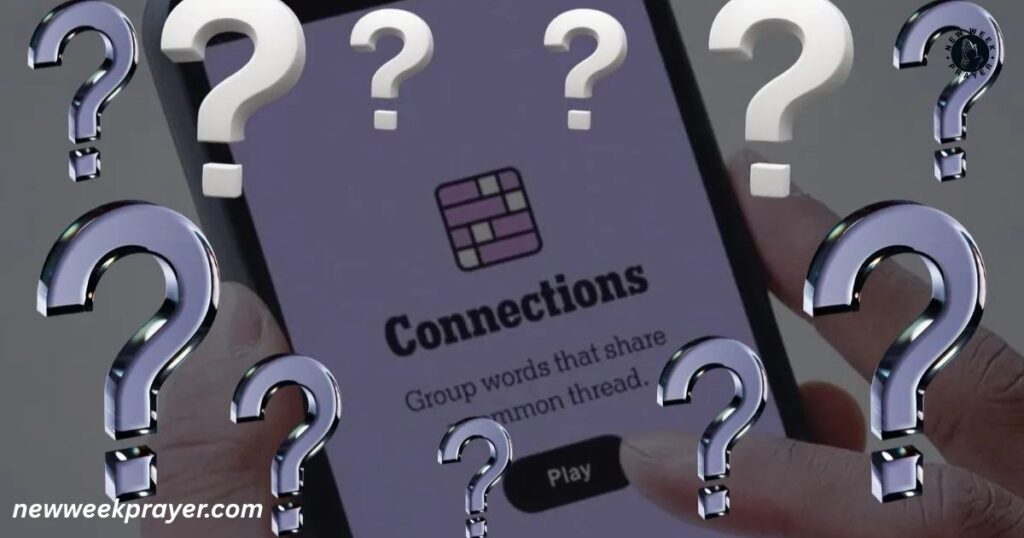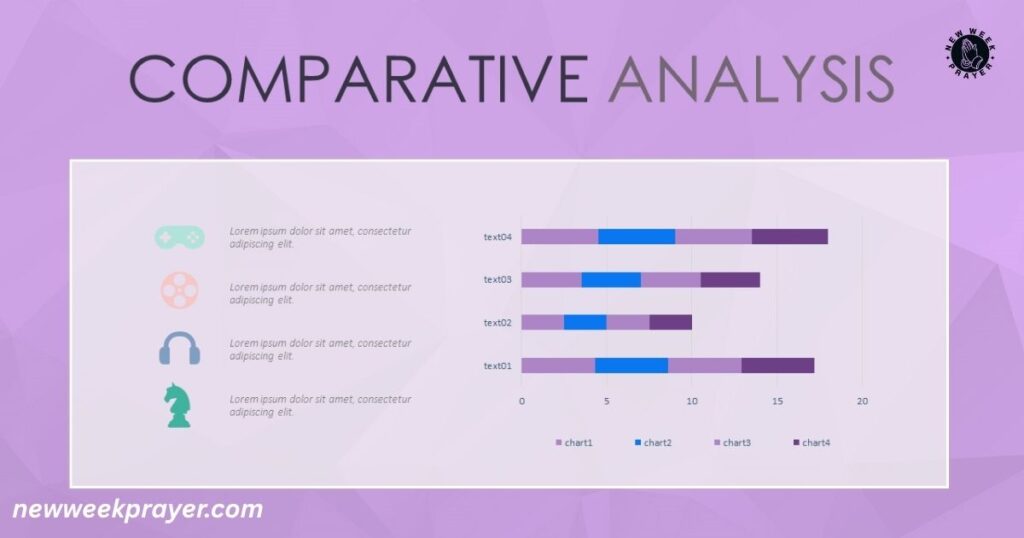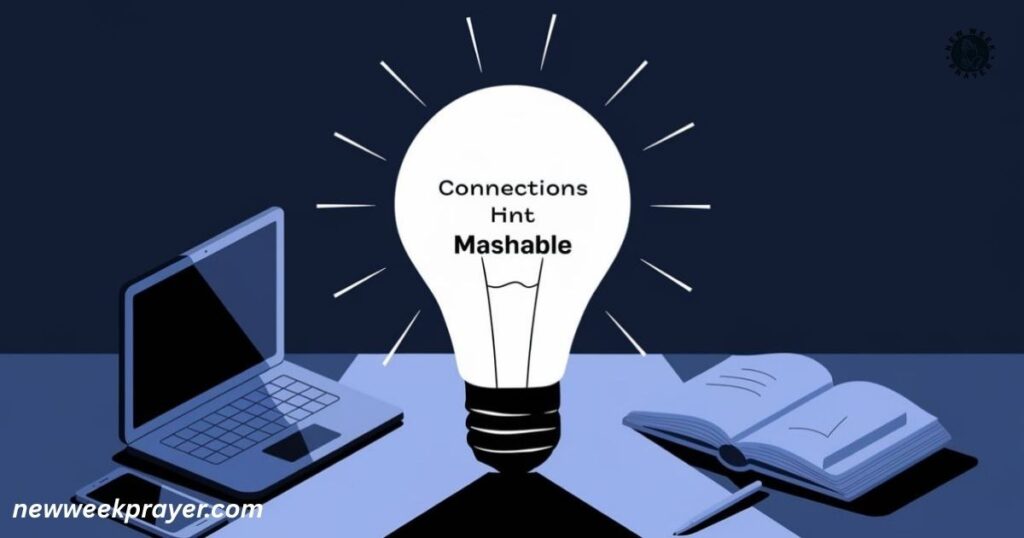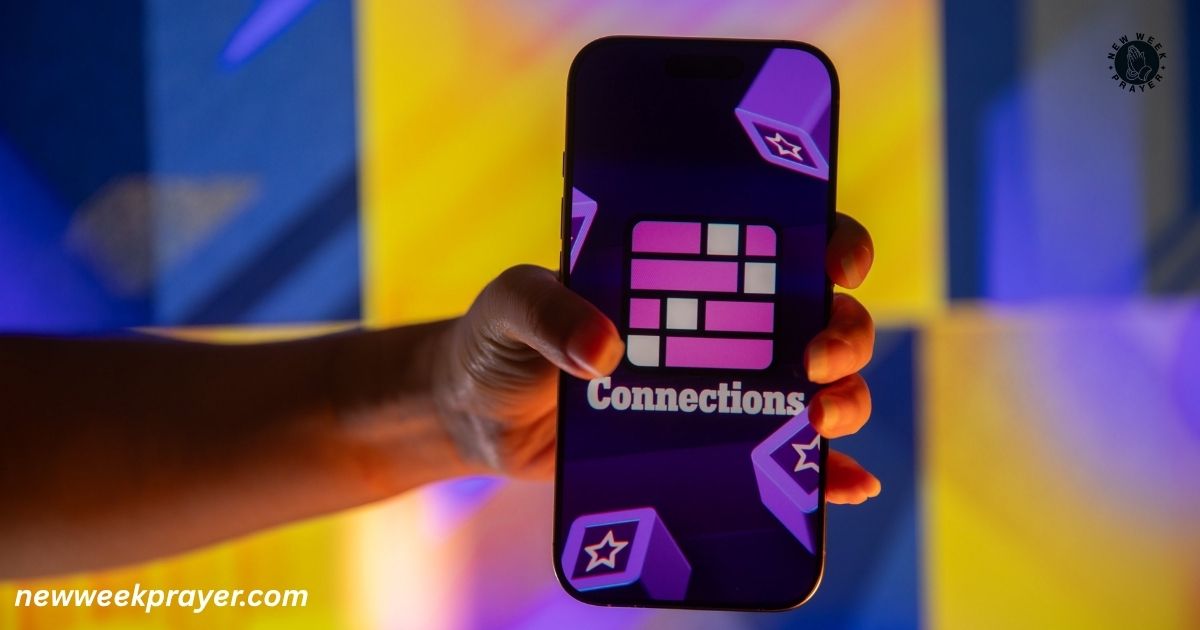The Guide to Mastering NYT Connections is here to help you solve the puzzle with ease. It’s made for everyone,from beginners to daily players. This fun word game needs logic, focus, and pattern skills. With the right hints and strategies, you’ll solve it faster and smarter. This guide shows how to group words, avoid wrong guesses, and think clearly.
The Guide to Mastering NYT Connections is simple, helpful, and full of smart tips. You’ll learn how to read clues, use daily hints, and stay calm when stuck. Solving word puzzles should feel fun, not hard. This guide makes the game easier and more exciting. With each try, you’ll get better. The Guide to Mastering NYT Connections gives you all the tools you need to win and enjoy every puzzle moment.
Introduction to NYT Connections

NYT Connections is a daily word puzzle game created by The New York Times. It challenges players to find groups of four words that are connected by a common theme. Each day, players are given 16 seemingly random words. The goal is to organize them into four categories, each with its own shared concept,like colors, sports, or famous people. Unlike traditional crossword puzzles or word searches, NYT Connections relies on lateral thinking and creativity. It’s about spotting subtle associations and thinking outside the box. Some categories are easy to identify, while others might be abstract or tricky. NYT Connections has quickly become a favorite among puzzle lovers because it blends fun, challenge, and wordplay into one engaging brain game.
What is NYT Connections?
NYT Connections is a daily word puzzle created by The New York Times, designed to test how well you can group words by a shared theme. Each puzzle presents 16 words, and the challenge is to sort them into four groups of four. These categories can range from straightforward topics like “fruits” to trickier ones like “homophones” or “things that can be split.” It’s a fun blend of logic, vocabulary, and lateral thinking. Unlike crossword puzzles, which rely on definitions, NYT Connections makes you think about patterns and associations. Some puzzles are deceptively simple, while others are frustratingly complex. It’s this mix of ease and difficulty that keeps players coming back each day for a fresh brain workout.
The Importance of Hints
Hints are an essential part of the NYT Connections experience, especially when the categories aren’t immediately obvious. Sometimes words can fit more than one category, creating confusion. That’s where hints help steer you in the right direction. While the official game offers no direct clues, players often rely on subtle strategies,like identifying common themes, scanning for puns, or searching for double meanings. Some people share hints online or discuss tricky words with friends. These discussions make the game more collaborative and enjoyable. Hints not only prevent frustration but also help build confidence in pattern recognition. They transform a potentially overwhelming challenge into an achievable goal. In many cases, one small hint can open the door to solving the entire puzzle.
1. Understanding the NYT Connections Puzzle
The NYT Connections puzzle challenges players to think critically by grouping 16 seemingly unrelated words into four connected categories. Each group shares a hidden theme,like musical instruments, clothing brands, or movie genres. What makes the puzzle engaging is the subtlety of these connections. Some links are obvious, while others require deeper thought or a creative mindset. Players must avoid false leads, as many words can fit into more than one group. This adds a layer of complexity and strategy. The game encourages logical reasoning, attention to detail, and even a bit of guesswork. Understanding the puzzle means recognizing patterns, spotting relationships, and using both vocabulary knowledge and intuition to uncover the correct groupings before running out of chances.
Read More:Step-by-Step Diu Win Login Tutorial: Access Your Account with Ease
1.1 Puzzle Format Explained
The format of the NYT Connections puzzle is simple yet mentally stimulating. Each puzzle presents 16 words arranged in a 4×4 grid. Your task is to find four sets of four words that share a common link or category. Once you select a group of four you believe are connected, you submit your guess. If correct, those words disappear from the grid, and you continue with the remaining ones. You get only four chances to make incorrect guesses, so careful thinking is key. The categories vary in difficulty, often color-coded from easiest (yellow) to hardest (purple). This format encourages not just word knowledge, but also creativity and pattern recognition, making every puzzle a unique and satisfying mental challenge.
1.2 The Role of Hints in Puzzle Solving
Here are 5 key roles that hints play in solving the NYT Connections puzzle:
- Guide Thinking Direction
Hints help steer your thought process toward the right category or theme when the connection isn’t immediately clear. - Reduce Confusion
They prevent misgrouping by clarifying which words don’t belong together, especially when multiple words seem similar. - Break Mental Blocks
When you’re stuck, a small clue can trigger a realization or fresh perspective that opens up the rest of the puzzle. - Enhance Accuracy
Hints improve your chances of solving the puzzle within the allowed guesses by pointing out hidden or tricky connections. - Encourage Learning
They reveal new word relationships or cultural references, helping you recognize patterns more easily in future puzzles.
2. ‘Mashable’s Unique Approach to Connections Hints‘

Mashable offers a distinctive and user-friendly approach to NYT Connections hints by providing just the right amount of help without spoiling the puzzle. Instead of giving direct answers, Mashable organizes its hints in a tiered format,from vague category nudges to more detailed clues,allowing players to choose how much assistance they want. This format respects the player’s desire to solve independently while offering support when needed. The hints are thoughtfully crafted to match the puzzle’s daily difficulty, often including clever wordplay or subtle thematic suggestions. By balancing challenge and guidance, Mashable enhances the puzzle-solving experience, making it more accessible and enjoyable for beginners and experienced players alike.
2.1 Overview of Mashable’s Hint Philosophy
Mashable’s hint philosophy centers on empowering players rather than handing them answers outright. The goal is to provide just enough insight to nudge solvers in the right direction while preserving the fun of discovery. Their hints follow a layered approach,starting with general theme clues for each group and progressing to more specific guidance only if needed. This lets users control how much help they receive. Mashable avoids spoilers unless explicitly requested, respecting the puzzle’s challenge and the satisfaction of solving it solo. Their philosophy encourages thoughtful problem-solving, curiosity, and learning, making the experience rewarding without taking away the core thrill of cracking the puzzle yourself.
2.2 Structure of Mashable’s Hints
Here’s a clear table outlining how Mashable structures its NYT Connections hints to guide players progressively:
| Hint Level | Description | Purpose |
| Level 1: Category Colors | Lists general categories in order (Yellow, Green, Blue, Purple) without words. | Offers a light nudge without spoiling word choices. |
| Level 2: Category Themes | Describes each group’s theme (e.g., “Types of Bread”, “Famous Trios”). | Helps players start forming connections around broad ideas. |
| Level 3: Word Examples | Gives one example word from each group (without revealing all 4). | Allows players to anchor their thinking with one clue. |
| Level 4: Full Answers (Optional) | Reveals all answers for players who choose to give up. | Offered only at the end to preserve the challenge. |
3. Real Examples of Mashable Hints in Action
Mashable’s hints come to life when you see them applied to actual puzzles. For example, if the categories include something like “Types of Fabric” or “U.S. Presidents,” Mashable may simply hint with phrases like “Cloth textures” or “Oval Office alumni.” These subtle nudges push your thinking in the right direction without giving away the answer. Players can then reexamine the word grid with a fresh lens, often spotting links they missed before. These real-life applications show how Mashable balances guidance and discovery, making the puzzle more rewarding while still preserving its original challenge and fun.
3.1 Yellow Category Example (Easiest)
For an easy Yellow category like “Types of Fruit,” Mashable might drop a simple clue such as “Tropical produce.” This nudges players to look at words like “Mango,” “Papaya,” “Pineapple,” and “Banana” without directly naming them. Because Yellow is the easiest category, Mashable’s clue remains general to keep the solving experience engaging. It helps beginners find momentum without removing the satisfaction of discovery. This soft-touch approach builds early confidence and encourages players to move on to tougher categories with a clearer head and more focus.
3.2 Purple Category Example (Hardest)
Purple categories are notoriously tricky and often involve puns, homophones, or abstract themes. For example, if the connection is “Words that sound like letters,” Mashable might hint: “Alphabet phonetics.” This subtle clue would guide players to match words like “Sea,” “Queue,” “Tea,” and “Be.” Unlike Yellow clues, this one requires lateral thinking and interpretation. Mashable avoids direct tips, instead challenging your logic and creativity. Their Purple category hints encourage deeper analysis and keep the hardest part of the puzzle from becoming frustrating or inaccessible.
3.3 Mixed Difficulty Case
In puzzles where difficulty varies widely, Mashable structures their hints to match each level’s challenge. For example, a grid may include both “Colors” (easy) and “Types of Knots” (hard). Mashable’s hint list might read: “Paint swatches” for Yellow and “Sailor skills” for Purple. These tailored clues help players pace themselves through the grid, tackling simpler sets first to build confidence before diving into harder ones. This approach not only mirrors the puzzle’s natural progression but also adds a layer of strategy, as players must choose how much help they want depending on their own strengths.
4. Advanced Techniques for Connections Hint Mashable
Mashable goes beyond basic clues by using advanced techniques that subtly guide users without giving away answers. They often employ wordplay, metaphorical hints, or cultural references to spark recognition without spoiling the puzzle. For example, instead of saying “Types of Clouds,” they might hint “Look up for these puffy categories.” This playful language invites lateral thinking. Mashable also considers common traps,words that seem related but aren’t,and crafts hints to help players avoid them. Another technique is thematic consistency: the hints flow in tone and difficulty, matching the puzzle’s progression. These advanced strategies make the game feel more interactive and mentally stimulating, offering guidance that still allows room for exploration and that satisfying “aha” moment.
4.1 Effective Hint Utilization
Using hints wisely can greatly improve your success rate in NYT Connections. Focus on the themes, avoid overthinking, and trust your intuition as you evaluate word groupings.
- Start with the easiest category (Yellow) to build momentum.
- Use hints only when you’re stuck, not at the start.
- Compare hinted themes with your current guesses.
4.2 Cognitive Techniques for Improvement
Sharpen your skills by practicing daily, analyzing patterns, and reflecting on mistakes. These techniques boost memory, logic, and recognition,essential for mastering Connections puzzles over time.
- Practice puzzles regularly to enhance pattern recognition.
- Use elimination to rule out unlikely word groups.
- Reflect on past puzzles to understand tricky connections.
5. The Mashable Hint Community and Resources
The Mashable hint community has become a vibrant hub for NYT Connections fans who seek smart, spoiler-free guidance. Through comment sections, social media, and daily updates, players come together to share strategies, celebrate streaks, and decode tricky word groups. Mashable’s structured hint system encourages thoughtful discussion rather than answer-dropping, fostering a space where learning and enjoyment go hand in hand. Players can scroll through gentle nudges, test their theories, and engage with others facing the same puzzle. Beyond hints, Mashable also links to related word games and tips, making it a go-to resource for daily solvers. Whether you’re stuck or just seeking connection, the community adds depth, fun, and a sense of shared accomplishment to the puzzle-solving journey.
5.1 Engaging with the Community
Joining the NYT Connections community helps you learn new strategies, share ideas, and enjoy friendly discussion. Collaboration turns a solo challenge into a fun, social experience.
- Follow forums or Reddit threads for shared insights.
- Discuss daily puzzles with friends or family.
- Exchange non-spoiler hints to build skills together.
5.2 Additional Resources for Players
To improve further, explore online tools, daily hint sites like Mashable, and YouTube puzzle breakdowns. These resources deepen understanding and make your puzzle-solving experience even more enjoyable.
- Use hint websites for structured, spoiler-free clues.
- Watch gameplay videos for strategy tips and techniques.
- Try other word games to broaden vocabulary and logic.
6. Comparative Analysis with Other Hint Sources

Mashable stands out among hint providers for its structured, non-spoiler format and user-focused approach. While other sites like Reddit or puzzle blogs often post full solutions or vague hints, Mashable organizes clues by difficulty level and gradually increases their specificity. This helps players control how much help they receive. Unlike platforms that mix spoilers and discussions, Mashable maintains clarity and separation, keeping the puzzle experience intact. Its clean layout and regular updates add to its reliability. While competitors offer variety and sometimes community engagement, Mashable remains the go-to for those who prefer thoughtful, well-crafted hints that enhance the challenge rather than bypass it.
6.1 Overview of Other Hint Providers
Other hint providers include Reddit, puzzle blogs, and YouTube. These sources often mix spoilers with clues, offering various styles of help,some overly detailed, others too vague for consistent use.
- Reddit allows real-time discussions but risks spoilers.
- Blogs offer mixed hint formats,some helpful, others confusing.
- YouTube gives walk-throughs but can ruin the puzzle experience.
6.2 Key Takeaways from the Comparison
Mashable offers structured hints, unlike others that often provide full answers. It balances support and challenge, allowing players to improve without spoiling the satisfaction of solving independently and creatively.
- Mashable avoids direct spoilers in its layout.
- Other sites may overwhelm users with too much help.
- Its step-based format supports gradual learning.
7. Tips from Connections Masters
- Start with the Yellow category,it’s usually the easiest.
- Look for words that clearly don’t fit anywhere first.
- Scan for common themes like food, colors, or professions.
- Group similar-sounding or looking words mentally before guessing.
- Be cautious,each wrong guess reduces your chances.
- Use the Mashable hints in layers, not all at once.
- Practice daily to improve your category recognition skills.
7.1 Insights from Experienced Players
Top players recommend patience, scanning for obvious connections, and learning from past puzzles. They also stress that solving gets easier as you develop category intuition and sharpen pattern recognition.
- Start with simple or repeated categories first.
- Learn common traps and misdirection techniques.
- Reflect on completed puzzles to identify patterns.
7.2 Building a Personal Strategy
Creating a personal strategy improves accuracy. Begin with what you know, eliminate distractors, and build confidence with every puzzle. Strategies vary, but consistency and reflection strengthen puzzle-solving instincts.
- Use themes you recognize as starting points.
- Remove obvious outliers to narrow choices.
- Develop a method and stick to it daily.
8. Troubleshooting Common Connections Challenges in Connections Hint Mashable

Even with Mashable’s smart hint system, players can run into challenges. Common issues include overthinking categories, misinterpreting a hint, or getting stuck on misleading word groupings. Sometimes hints feel too abstract or seem to match more than one answer. In such cases, it’s helpful to step back and reset your thinking. Reviewing solved categories and reevaluating remaining words often leads to fresh insight. Mashable’s hint layers make troubleshooting easier,players can revisit earlier clues or advance to more direct help if needed. The key is staying patient, using the hints flexibly, and not fearing a wrong guess.
8.1 Identifying Common Issues
Common problems include rushing guesses, misinterpreting hints, or grouping words by appearance. Identifying these patterns and adjusting how you approach categories helps you solve puzzles more effectively over time.
- Don’t rely only on surface word similarities.
- Avoid guessing randomly to preserve chances.
- Misread hints often lead to wrong connections.
8.2 Staying Motivated and Engaged
Staying motivated means keeping the game fun and light. Celebrate small wins, track your progress, and take breaks if frustrated. Sharing with others can renew excitement and puzzle interest.
- Play with friends to boost engagement.
- Use hints as tools, not shortcuts.
- Take breaks to return with fresh focus.
FAQ’s
What is the Guide to Mastering NYT Connections?
The Guide to Mastering NYT Connections is a simple help guide. It teaches easy tips and smart tricks to solve the word puzzle better.
Who should read the Guide to Mastering NYT Connections?
Anyone who plays the NYT Connections puzzle can use it. It’s perfect for beginners and also helpful for daily puzzle lovers.
What tips are in the Guide to Mastering NYT Connections?
It gives grouping tricks, hint use advice, and ways to avoid common mistakes. These tips help you solve puzzles faster and smarter.
Does the Guide to Mastering NYT Connections use spoilers?
No, it gives soft clues and general help only. It lets you enjoy the puzzle while still getting helpful guidance.
Can the Guide to Mastering NYT Connections improve my skills?
Yes, daily practice with the guide builds thinking skills. You’ll get better at spotting patterns and solving puzzles with more confidence.
Conclusion
The Guide to Mastering NYT Connections helps you play smarter. It gives tips, hints, and strategies to solve puzzles faster. You learn how to group words, avoid mistakes, and stay calm under pressure. Using daily practice and simple thinking tricks makes a big difference. Whether you’re new or experienced, this guide can boost your skills.
Keep using the Guide to Mastering NYT Connections for better results. It’s full of helpful ideas and easy-to-follow steps. The more you play, the more fun it gets. Use smart hints, stay focused, and enjoy each puzzle. The Guide to Mastering NYT Connections is your key to solving with confidence and skill. It turns frustration into fun, one word group at a time. Keep solving, keep improving, and let the puzzle fun grow.

Andre Wdlake is the dedicated admin of “New Week Prayer,” bringing 5 years of experience in managing blog content and engaging with readers. With a passion for meaningful storytelling, Andre ensures every post inspires and connects deeply with the audience.

